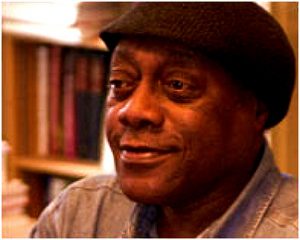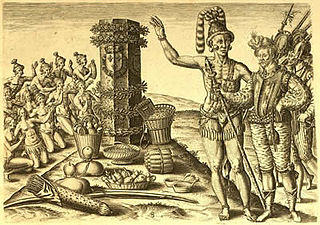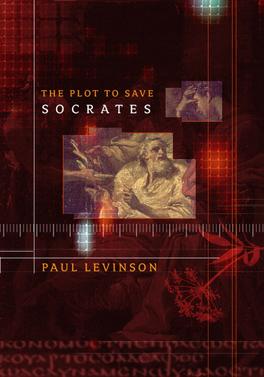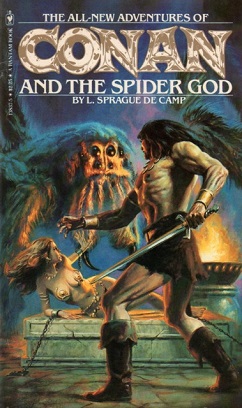Related Research Articles

Edgar Rice Burroughs was an American writer, best known for his prolific output in the adventure, science fiction, and fantasy genres. Best known for creating the characters Tarzan and John Carter, he also wrote the Pellucidar series, the Amtor series, and the Caspak trilogy.

James Alan McPherson was an American essayist and short-story writer. He was the first African-American writer to win the Pulitzer Prize for Fiction, and was included among the first group of artists who received a MacArthur Fellowship. At the time of his death, McPherson was a professor emeritus of fiction at the Iowa Writers' Workshop.
A graphic novel is a long-form work of sequential art. The term graphic novel is often applied broadly, including fiction, non-fiction, and anthologized work, though this practice is highly contested by comics scholars and industry professionals. It is, at least in the United States, typically distinct from the term comic book, which is generally used for comics periodicals and trade paperbacks.

Jonathan Weiner is an American writer of non-fiction books based on his biological observations, focusing particularly on evolution in the Galápagos Islands, genetics, and the environment.
Alexander Hill Key was an American science fiction writer who primarily wrote children's literature.

Peter Schuyler Miller was an American science fiction writer and critic.

Jacques Le Moyne de Morgues (c. 1533–1588) was a French artist and member of Jean Ribault's expedition to the New World. His depictions of Native American life and culture, colonial life, and plants are of extraordinary historical importance.
Katharine Weber is an American novelist and nonfiction writer. She has taught fiction and nonfiction writing at Yale University, Goucher College, the Paris Writers Workshop and elsewhere. She held the Visiting Richard L. Thomas Chair in Creative Writing at Kenyon College from 2012 to 2019.

Ian Rosales Casocot is a Filipino journalist and writer of speculative fiction, literary fiction, poetry, drama, and creative nonfiction from Dumaguete, Philippines. He is known for his prizewinning short stories "Old Movies," "The Hero of the Snore Tango," "Rosario and the Stories," "A Strange Map of Time," "The Sugilanon of Epefania's Heartbreak," and "Things You Don't Know." He maintained A Critical Survey of Philippine Literature, a website on Filipino writings and literary criticism.

Miles John Breuer was an American physician and science fiction writer of Czech origin. Although he had published elsewhere since the early 20th century, he is considered the part of the first generation of writers to appear regularly in the pulp science fiction magazines, publishing his first story, "The Man with the Strange Head", in the January 1927 issue of Amazing Stories. His best known works are "The Gostak and the Doshes" (1930) and two stories written jointly with Jack Williamson, "The Girl from Mars" (1929) and The Birth of a New Republic (1931).

The Plot to Save Socrates is a time travel novel by Paul Levinson, first published in 2006. Starting in the near future, the novel also has scenes set in the ancient world and Victorian New York.

Conan and the Spider God is a fantasy novel by American writer L. Sprague de Camp featuring Robert E. Howard's sword and sorcery hero Conan the Barbarian. It was first published in paperback by Bantam Books in December 1980; later paperback editions were issued by Ace Books and Tor Books. The first hardcover edition was issued by Robert Hale in 1984, and the second by Tor Books in 2002. It was later gathered together with Conan the Swordsman and Conan the Liberator into the omnibus trade paperback collection Sagas of Conan.

William Murray is an American novelist, journalist, short story, and comic book writer. Much of his fiction has been published under pseudonyms. With artist Steve Ditko, he co-created the superhero Squirrel Girl.

Carl Hoffman is an American journalist and the author of five books of narrative non-fiction.
Gerald Jay Goldberg was an American author. He was a professor emeritus at the University of California, Los Angeles, where he taught English and American literature and Creative Writing. An acclaimed novelist, he was also a critic and the author of a nonfiction study of the network news and a biography of Ted Turner.

Non-fiction comics, also known as graphic non-fiction, is non-fiction in the comics medium, embracing a variety of formats from comic strips to trade paperbacks.

Peter Selgin is an American novelist, short story writer, playwright, essayist, editor, and illustrator. Selgin is Associate Professor of English at Georgia College & State University in Milledgeville, Georgia.
Christine Sneed is an American author — the novels Little Known Facts (2013), Paris, He Said (2015), and Please Be Advised (2022), and the story collections Portraits of a Few of the People I've Made Cry (2010), The Virginity of Famous Men (2016), and Direct Sunlight (2023) — as well as a graduate-level fiction professor at Northwestern University who also teaches in Regis University's low-residency MFA program. She is the recipient of the Chicago Public Library Foundation's 21st Century Award, the John C. Zacharis First Book Award, the Society of Midland Authors Award, the 2009 AWP Grace Paley Prize for Short Fiction, and the Chicago Writers' Association Book of the Year Award in both 2011 and 2017.

The Swerve: How the World Became Modern is a 2011 book by Stephen Greenblatt and winner of the 2012 Pulitzer Prize for General Non-Fiction and 2011 National Book Award for Nonfiction.

The Power of the Dog is a 1967 novel of Western fiction written by American author Thomas Savage.
References
- ↑ Franchine, Philip (September 19, 1986). "Robert Harvey, retired Downers Grove teacher". Chicago Sun-Times. p. 67.
- ↑ "Death Notice: KATHRYN HARVEY". Chicago Tribune. December 15, 2013.
- ↑ Mitchell, Kerrie (June 20, 2008). "Painter in a Strange Land". Entertainment Weekly. p. 70.
- ↑ "2021 Winners".
- ↑ "Editors' Choice / Staff Picks from the Book Review". New York Times Book Review. August 2, 2020. p. 23.
- ↑ Seaman, Donna (July 2024). "The Registry of Forgotten Objects: Stories". Booklist.
- ↑ Lyons, Gila (November–December 2020). "A Chicago Press for the People". Poets & Writers.
- ↑ Borrelli, Christopher (October 23, 2022). "DePaul Project Gathers Oral Record of Modern Chicago: Terkel-Inspired Books of Anecdotes from Little-Known City Dwellers are Free for the Asking". Chicago Tribune. p. 1 section 2.
- ↑ "Big Shoulders Books". Humanities for All. March 2023.